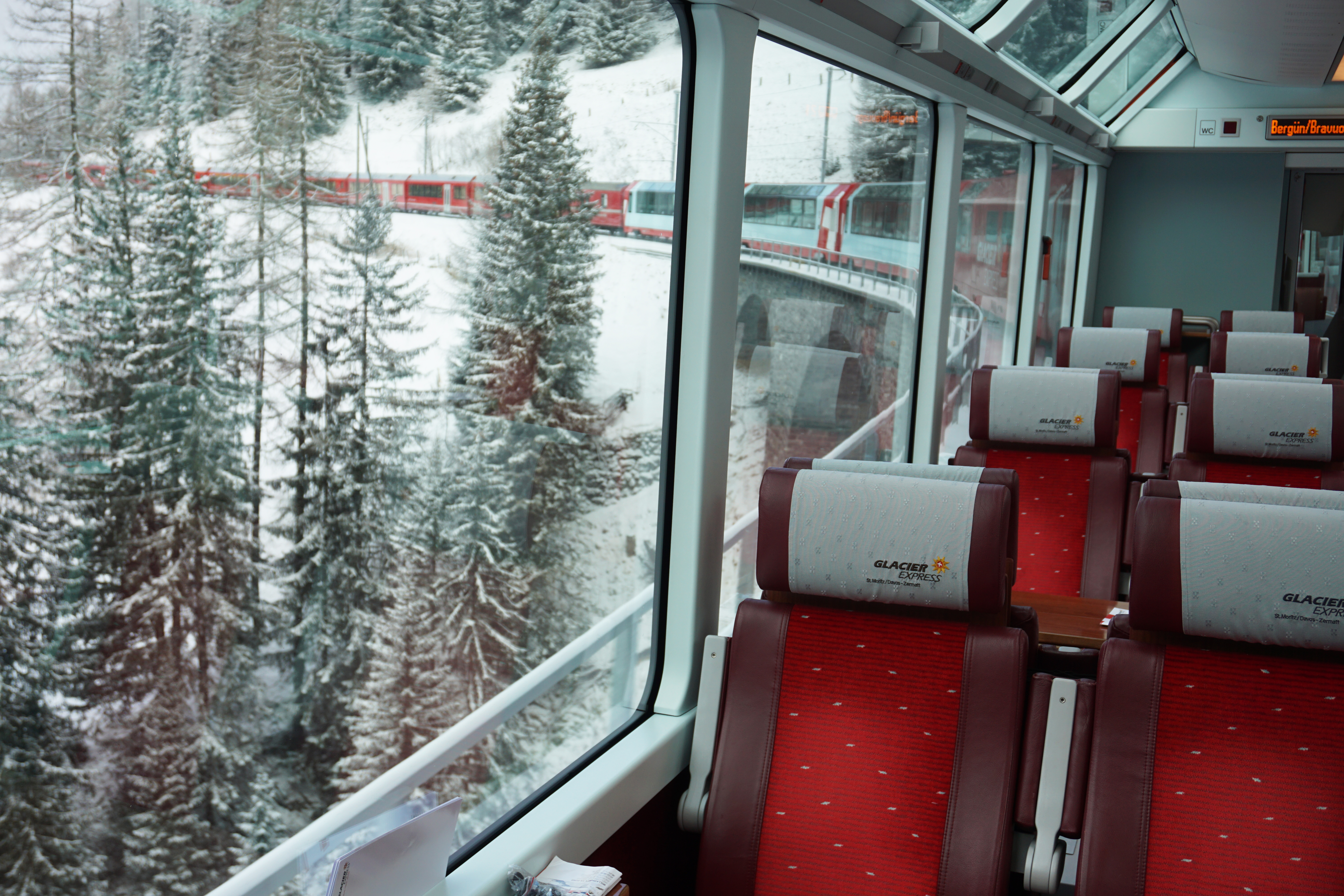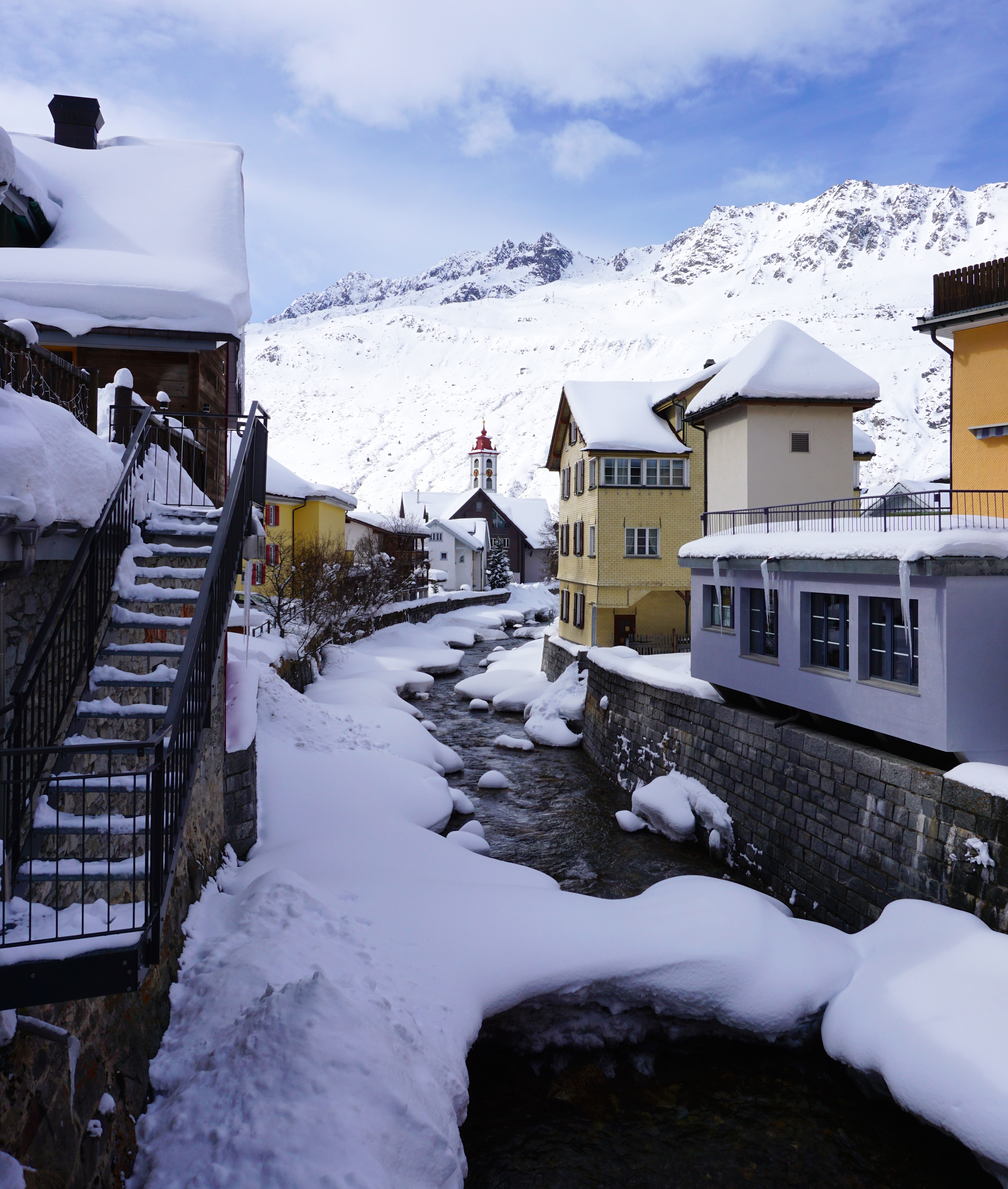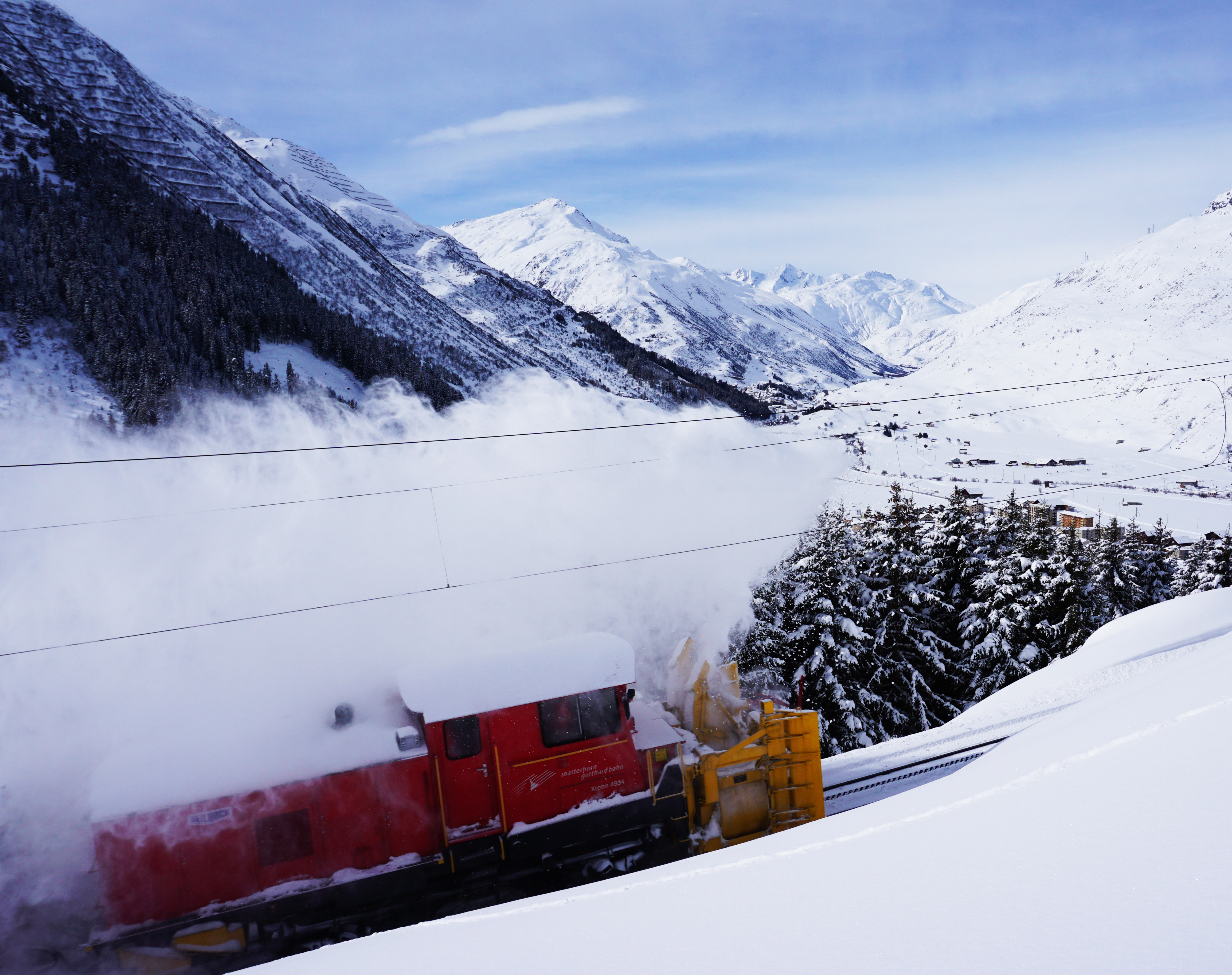ANDERMATT, SWITZERLAND — From my seat aboard the Glacier Express, I feel like I’m looking at an endless series of Giovanni Segantini paintings. The breathtaking Alpine pastoral landscapes that the legendary 19th-century Italian artist was so famous for painting are framed in my window as the scenic train slowly moves through the heart of the Swiss Alps.
I press my nose up against the window, awed by the natural beauty that so inspired Segantini. The only interruption is when the train enters one of the 91 tunnels located along the 291 km route — day suddenly becomes night when the Glacier Express, billed as the “slowest express train in the world,” is swallowed up by the remarkable man-made mountain cavities.
Since boarding the train in St. Moritz, Switzerland’s winter wonderland for the wealthy, I’ve been overwhelmed by the breathtaking Alpine scenes and the service supplied by Glacier Express staff. They pour me beer made from the glacial waters I see streaming off the mountains in spectacular waterfalls, feed me regional cuisine using farm-to-table ingredients grown in the idyllic pastures that sit below the train tracks, and educate me on the fascinating customs and traditions of the Alpine people.


Above: From your Glacier Express seat you get to see lovely towns like Andermatt pass outside your window.
I dart from one side of the panorama coach to the other so as not to miss any of the natural splendour passing by — the train travels at an average speed of 35 kph so guests can feel the full impact of the Alps.
The most spectacular section of the trip is between Preda and Bergun, where the Glacier Express navigates six towering viaducts, three spiral tunnels and two helical tunnels that make it possible for the little red and white train to scale a height difference of 400 metres. It’s no wonder this section has been recognized by UNESCO as one of its World Heritage Sites.
While the scenery leaves me breathless, the engineering feats needed the create this, one of the world’s truly great train routes, overwhelms me. There’s no better example of that than the 65-metre-high Landwasser Viaduct, one of the most photographed landmarks in Switzerland. The 142-metre-long stone bridge, which was completed in 1902, is supported by five arched walled pillars that rise from one of the route’s deepest gorges to allow the train to reach a tunnel of the same name.
In all, there are 291 bridges along this fascinating route, which stretches from St. Moritz to Zermatt, where the mighty Matterhorn is located.
While the train proceeds, passengers listen to commentary on earphones supplied at each seat and learn that it took five years and over 5,000 men to build the line, which, at the time of its completion, was the most expensive railway project ever undertaken. The engineering achievements accomplished here were later used to build other great railways, like the Canadian Pacific, which united Canada from coast to coast.

Above: Massive snowplows are needed to clear the track for the Glacier Express.
During my four-hour journey, I’m entertained by eagles flying over the domed coach and I marvel at the serene Alpine villages and their neatly-kept shuttered homes that appear every so often. Equally impressive are the many jade-coloured lakes that are fed by glacial streams.
At times, the passages are so narrow I think my car will scrap up against the rock walls or fall off the narrow-gauge tracks into the abyss of the deep gorges.
The train is most popular during the summer months but winter weekends can be hectic as well, according to the conductor.
Before we reach Andermatt, we pass some important towns and cities, like Chur (pronounced Coor), which is the oldest town in Switzerland with 5,000 years of history. Its Old Town is a great place to wander and the fact the Rhine river turns towards the north from here is another source of pride for the population.
This is also the area where the fictional character Heidi is from. Swiss author Johanna Spyri made Heidi famous in her late 18th-century books and the cute Alpine girl stills remains an iconic figure worldwide.
Shortly after we leave Chur we enter the Rhine Gorge, which is often referred to as Switzerland’s Grand Canyon. Formed after the last Ice Age, the gorge offers some dramatic rock formations but until this part of the railway was finished in 1903, it remained inaccessible to tourists. The gorge is also home to 350 species of butterflies and rare wild orchids.
The Glacier Express slowly climbs out of the gorge and we start moving towards Disentis, the historic town which boasts the largest Romansh-speaking community in Switzerland. Romansh originates from the spoken Latin and was brought to Switzerland by Roman soldiers. Since 1938, it’s been recognized as one of the national languages of Switzerland.
The conductor tells me that most Swiss can speak German, French, Italian, English or Romansh. He also informs me that every Swiss citizen uses the country’s remarkable rail system — on average, each of the 8.4 million Swiss travel 2,300 km by train each year. “That makes ours the densest rail system in the world,” he proudly boasts.
“You’ll know we are getting close to Disentis when you see the double spires of the church,” he says.
The church, which is attached to the Disentis’s Benedictine monastery, dates back to 1683 and the abbey still remains one of the most prestigious schools in all of Switzerland. Being the first town on the Rhine River is also another thing the locals like to boast about.
Before heading into the spectacular Oberalppass, the engine is replaced with a much stronger one, but even with more horsepower, the Glacier Express still needs the assistance of a giant cog wheel — another engineering triumph of Swiss railway engineers — to reach the 2,033 metres above sea level that we’ll eventually climb before descending into Andermatt.
The Alpine scenery, which just a short time ago featured green meadows when we left Chur, is now snow white and as we climb higher, the drifts are as high as the coach window.
“We need very special snow trains to clear the tracks so the Glacier Express can keep moving through here,” says the conductor.
Soon after that, the Glacier Express pulls into lovely Andermatt, a 12th-century town that is being turned into Switzerland’s most modern ski resort, and the conductor bids me uf widerluege (goodbye).
My remarkable journey aboard the Glacier Express (it proceeds to Zermatt) is over but the memories of this trip though the majestic Swiss Alps will live on forever. •
Information
The best way to get around Switzerland is by train. Swiss Travel System
— http://www.myswitzerland.com/ — offers many options, including the Glacier Express. For travel brochures on Switzerland, go to info.use@switzerland.com
About the Author
Marc Atchison is a veteran journalist and a seasoned traveller with more than 20 years of travel writing experience. As the former Travel Editor of the Toronto Star, Canada's largest newspaper, and now Editor-in-Chief and Senior Writer for TraveLife magazine (Canada) and travelife.ca, Marc has been to over 100 countries in the world. Japan is one of his favorite destinations and he's been there on numerous occasions.